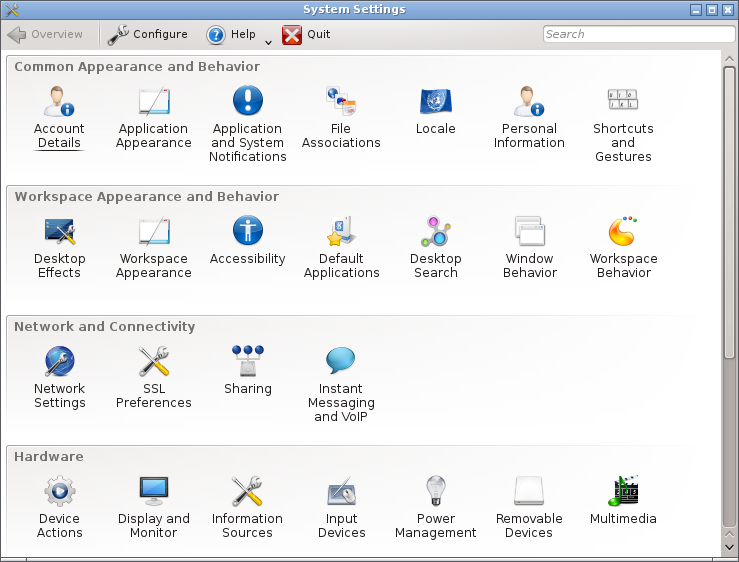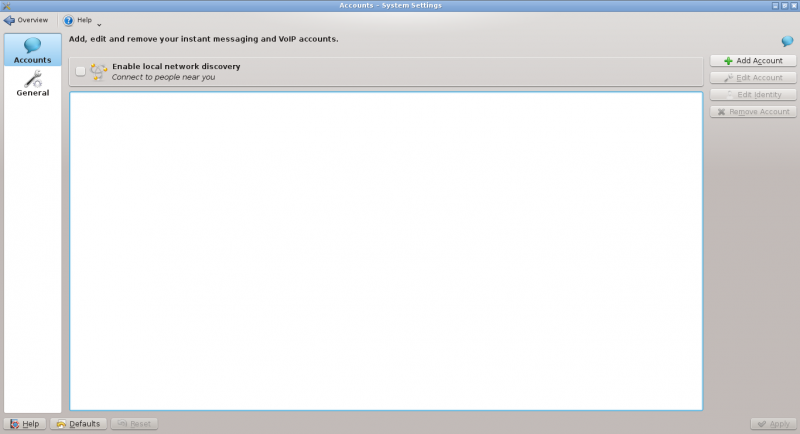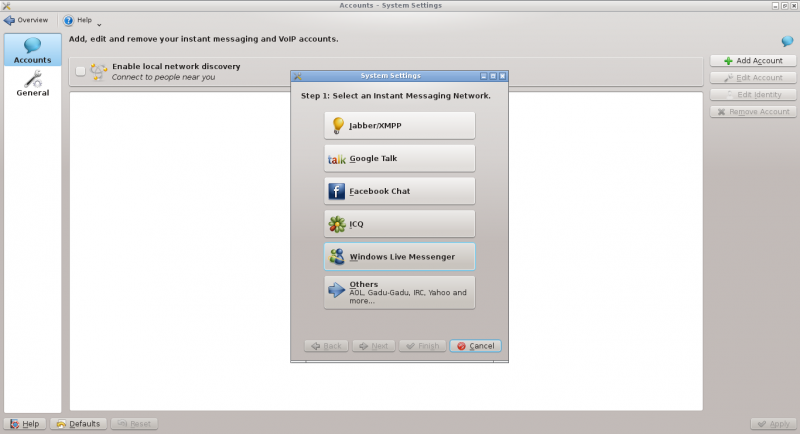Telepathy

Under Construction
This is a new page, currently under construction!

Information
Please add general information about KDE Telepathy above the FAQ section, and paste questions and answers from forums or mailing lists into the FAQ section
Popis
KDE Telepathy provides a suite of applications for a full instant messaging experience.
FAQ
1. How do I add a new IM accounts
- Open System Settings.

- Open .

- Click on .

- Click on an IM network and follow the steps.
2. How do I add a contact
Open the contact list. Click in the toolbar. You will then need to select which of your accounts the contact should be added to and then enter the ID/Email Address of the contact you wish to add.
3. How can I have quick access to my online state, and easily open the contact list
Right click on the system tray. System tray settings. Under select .
4. How can I make the contact list dock to the systray
You can't. Perform the steps above for something better.
5. How do I add a Skype Account
Archlinux
- install skype4pidgin-svn-dbus from AUR
6. How do I add a Google Talk account if I use 2-step verification
This guide assumes you have installed KWallet.
- Create an application-specific password.
- Open System Settings.
- Open .
- Click on .
- Click on the Google Talk icon.
- You might see a warning about additional plugins. Check that they are installed.
- Enter your email address and your password. Finish the wizard.
- You should then see a window. There should be two fields if you run KWallet for the first time, one if you have already created a wallet. Use any password you want.
6. Integrate the KDE-Telepathy VoIP module into KAddressBook
- Open KAddressBook (e.g. in Kontact)
- Select menu and then .
- In the section select .
- Enter the following command: ktp-dialout-ui %n
- Press .
Klicking on a telephone number in KAddressBook will open the KDE-Telepathy VoIP dialog. Select your ID (if you have more than one) and start your call.
Tips and Tricks
- When chatting you can click on an emoticon to change it back into text. This is useful when receiving code which accidentally is rendered into smilies.
